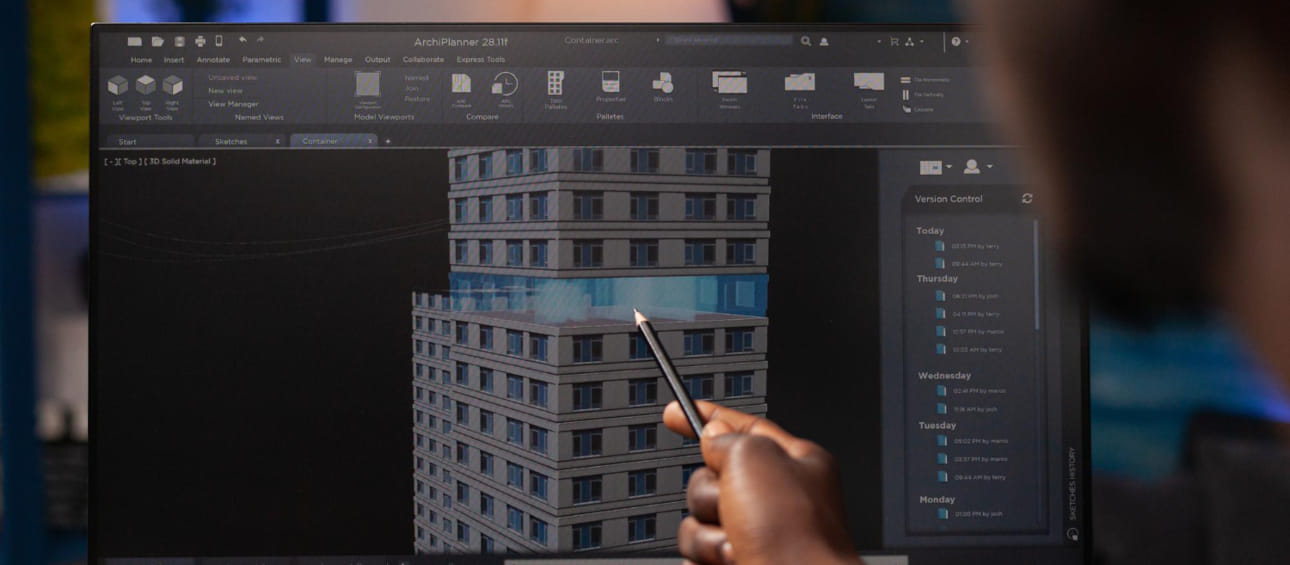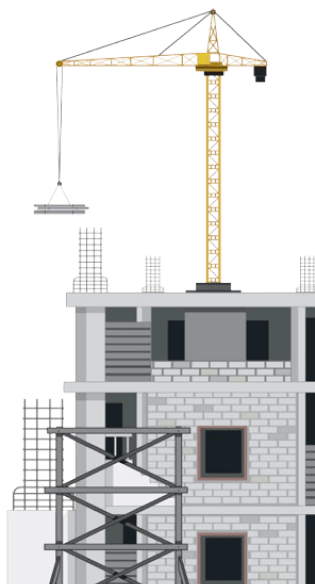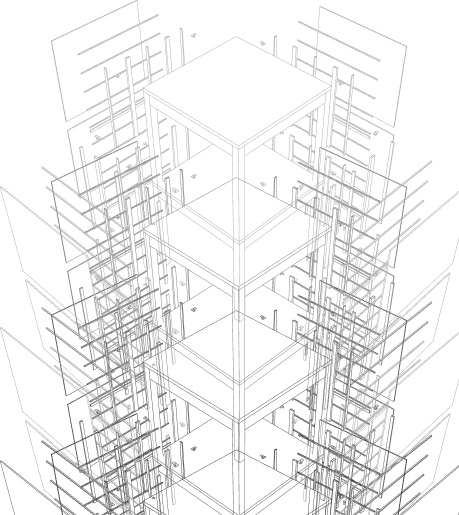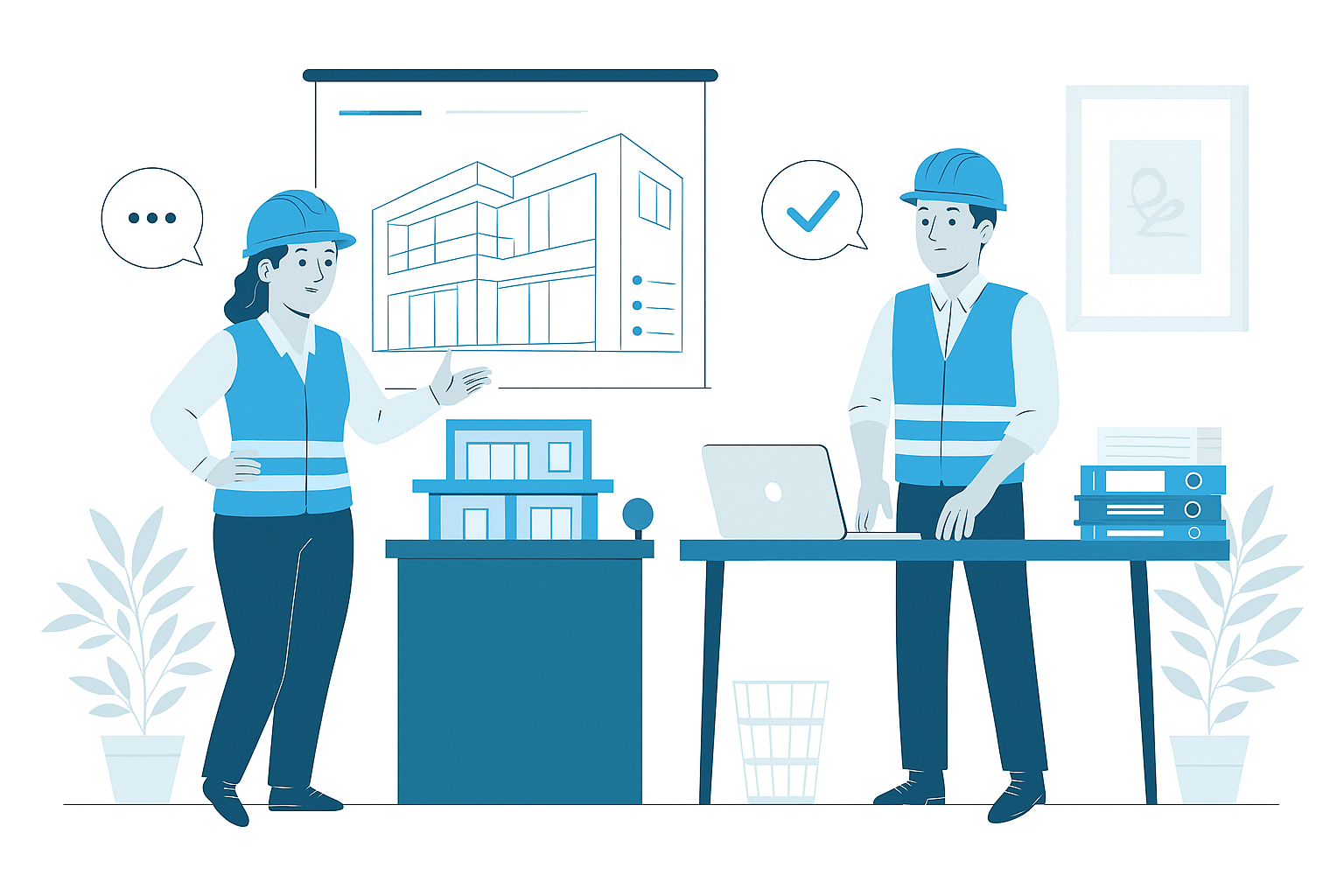Infrastructure BIM Modeling Services
In the evolving field of civil engineering and infrastructure development, Building Information Modeling (BIM) has transformed how transportation systems, site development, and utility infrastructure are designed, analyzed, and constructed. Our specialized Infrastructure BIM services apply advanced digital modeling methodologies to civil projects including roads, bridges, utilities, and site development, creating intelligent 3D representations that enhance project delivery. These comprehensive models integrate spatial configuration, component properties, and engineering data that collectively improve coordination, optimize design, and streamline construction for complex infrastructure projects.

Civil Engineering BIM
- Comprehensive BIM modeling for transportation, site development, and civil infrastructure
- Intelligent 3D representation of roads, bridges, utilities, and site features
- Integrated terrain modeling with accurate topography and environmental elements
- Advanced coordination between infrastructure systems and structural components
- Information-rich models supporting engineering analysis and construction planning
Comprehensive Infrastructure BIM Development
Our Infrastructure BIM services implement a structured development approach that creates detailed digital representations of civil engineering projects. We begin with comprehensive data acquisition from surveys, geotechnical investigations, and existing documentation to establish accurate base conditions. From this foundation, we develop intelligent infrastructure models with precise geometric control, accurate spatial positioning, and detailed component representation that properly reflects design intent and construction requirements. These models incorporate terrain features, transportation elements, site development, utility systems, and structural components with appropriate relationships and technical parameters.
Throughout development, our coordination processes ensure proper integration between different infrastructure systems, adjacent properties, and existing conditions while validating engineering requirements including clearances, slopes, capacities, and performance specifications. For complex infrastructure projects, phasing models represent construction sequences, temporary conditions, and implementation stages that support effective project planning and stakeholder communication. The completed Infrastructure BIM provides comprehensive digital representation with appropriate detail levels, component properties, and technical parameters supporting both construction implementation and future asset management. This integrated approach transforms traditional infrastructure documentation into intelligent digital models that substantially improve coordination, enhance analytical capabilities, and support effective project delivery across transportation, site development, and utility applications.
Strategic Benefits of Infrastructure BIM
Implementing Infrastructure BIM delivers substantial advantages throughout planning, design, construction, and long-term operations of civil projects. During design development, the intelligent 3D environment enables enhanced engineering analysis, improved alternative evaluation, and optimized design decisions through comprehensive digital prototyping before physical implementation. The integrated approach allows multidisciplinary teams to collaborate effectively, improves stakeholder communication, and enhances public engagement through advanced visualization capabilities that clearly communicate complex infrastructure concepts.
For construction implementation, Infrastructure BIM provides significant coordination benefits, identifying spatial conflicts between various systems, validating clearance requirements, and confirming constructability before field activities begin. These proactive capabilities typically reduce infrastructure-related RFIs by 40-60%, decrease change orders by 25-35%, and significantly improve construction efficiency compared to traditional methods. The detailed models enable precise quantity takeoffs, accurate material estimations, and optimized construction sequencing that collectively improve project logistics and resource allocation. Throughout project delivery, these benefits combine to reduce overall infrastructure costs by 15-20%, decrease delivery timelines by 20-30%, and significantly enhance infrastructure quality and compliance with design intent. Beyond construction completion, the comprehensive digital representation provides valuable reference information for asset management, maintenance operations, and future modifications that extends these benefits throughout the entire infrastructure lifecycle.
Applications of Infrastructure BIM
Highway & Bridge Projects
Comprehensive BIM implementation for transportation corridors, interchanges, bridges, and roadway systems with complex geometric and structural requirements. Our transportation BIM addresses alignment optimization, earthwork management, structure integration, and utility coordination with appropriate construction phasing and traffic management. These detailed models support the demanding engineering requirements, complex stakeholder coordination, and precise construction sequencing necessary for successful delivery of these critical infrastructure projects.
Urban Development & Renewal
Specialized Infrastructure BIM for urban developments, downtown revitalization, and city center projects with complex integration requirements. Our urban modeling addresses multiple infrastructure systems, existing condition constraints, utility conflicts, and complex stakeholder relationships with appropriate phasing and implementation strategies. These comprehensive models support the coordination challenges, construction logistics, and public impact management essential for successful implementation of these complex urban infrastructure improvements.
Campus & Institutional Development
Integrated Infrastructure BIM for university campuses, medical centers, corporate complexes, and institutional facilities with comprehensive site and infrastructure requirements. Our campus modeling addresses circulation systems, utility networks, grading improvements, and landscape features with appropriate phasing strategies and long-term planning considerations. These detailed models support both initial construction and future expansion while ensuring infrastructure reliability, environmental compatibility, and operational effectiveness throughout these complex multi-building environments.
Water Resource & Environmental Projects
Specialized Infrastructure BIM for stormwater management, flood control, water quality, and environmental improvement projects with complex hydrologic requirements. Our water resource modeling addresses collection systems, conveyance networks, treatment facilities, and natural features with accurate capacity parameters and performance characteristics. These comprehensive models support both regulatory compliance and construction implementation while ensuring proper system function, environmental protection, and long-term sustainability for these critical infrastructure improvements.
Why Choose Us
Advanced Infrastructure BIM Services That Enhance Civil Engineering Project Delivery
01
Expert Team
Certified BIM specialists with extensive experience across architectural, MEP, and facade modeling projects
02
Comprehensive Services
End-to-end BIM solutions from initial modeling to coordination, documentation, and facility management
03
Quality Assurance
Rigorous quality control processes ensuring clash-free models, accurate documentation, and seamless collaboration
04
Dedicated Support
Responsive team available to assist throughout your project lifecycle, ensuring timely solutions and continuous assistance

Know More
Frequently Asked Questions
Infrastructure BIM Modeling is the application of Building Information Modeling methodologies to civil engineering and infrastructure projects including roads, bridges, utilities, transit facilities, and site development. Unlike traditional 2D documentation approaches, Infrastructure BIM creates information-rich 3D models containing comprehensive data about physical components, spatial relationships, performance characteristics, and construction requirements. This approach has become increasingly critical as infrastructure projects grow in complexity, involving multiple systems, stakeholders, and construction phases that require enhanced coordination and information management. By creating intelligent digital representations, Infrastructure BIM enables advanced planning capabilities, improved spatial coordination, enhanced visualization, and data-driven decision making throughout project development. Industry studies show that projects implementing comprehensive Infrastructure BIM typically experience 15-20% reduced construction costs, 20-30% shorter delivery timelines, and 30-40% fewer change orders compared to traditional methods. Beyond these quantifiable benefits, Infrastructure BIM provides enhanced stakeholder communication, improved project understanding, better public engagement, and more effective long-term asset management capabilities. As infrastructure demands and complexity continue to increase, this integrated digital approach has become essential for successful project delivery across transportation, utility, and civil development applications.
Our Infrastructure BIM modeling process follows a structured methodology that systematically develops comprehensive digital representations of civil projects. We begin with data acquisition, gathering existing information including surveys, geotechnical reports, existing infrastructure documentation, and environmental data to establish accurate base conditions for model development. Initial planning establishes model organization, level of development requirements, and information protocols based on project complexity and delivery needs. The modeling development proceeds through progressive phases starting with terrain and existing conditions before addressing major infrastructure components, supporting systems, and detailed elements. For transportation projects, we develop corridor models with proper alignment, profile, and cross-section development that accurately represents roadways, railways, or transit facilities within their topographic context. Site development models integrate grading, drainage patterns, access features, and landscape elements with appropriate relationships and elevation control. Utility infrastructure incorporates underground and surface systems with proper spatial positioning, component properties, and network connectivity. Structural elements including bridges, retaining walls, and specialized infrastructure receive detailed component modeling with proper materials, connections, and dimensional accuracy. Throughout development, our coordination processes ensure proper integration between different infrastructure systems, adjacent properties, and existing conditions. Quality verification confirms dimensional accuracy, component properties, system continuity, and spatial integration throughout the model. The completed Infrastructure BIM incorporates appropriate metadata, identification, and technical parameters supporting both construction implementation and future operations. This comprehensive approach ensures all infrastructure elements receive appropriate development regardless of scale or complexity.
Our Infrastructure BIM services address diverse project types across transportation, site development, and utility applications with appropriate modeling approaches and detail levels. For transportation infrastructure, we model roadway systems including highways, urban streets, and local roads with accurate alignment, profile, pavement design, intersection configuration, and traffic management elements. Bridge projects receive comprehensive modeling including substructure, superstructure, approach features, and connection elements with detailed component representation and construction sequencing. Railway and transit facilities incorporate track systems, stations, maintenance facilities, and operational infrastructure with proper geometric control and clearance requirements. Site development projects include commercial sites, industrial facilities, campus environments, and mixed-use developments with complete grading, access, circulation, and supporting infrastructure. Water management projects encompass stormwater systems, flood control infrastructure, retention/detention facilities, and treatment components with accurate capacity modeling and performance parameters. Utility infrastructure includes water supply, sanitary sewer, power distribution, telecommunications, and specialized service networks with proper spatial positioning and component specification. Municipal projects address public spaces, parks, recreational facilities, and community infrastructure with comprehensive site features and supporting systems. Each project type receives appropriate modeling development based on specific requirements, complexity, and implementation needs, creating information-rich digital representations that support both design optimization and construction implementation regardless of project scale or application.
Infrastructure BIM delivers substantial coordination benefits and construction improvements through comprehensive digital integration and enhanced information management. The primary coordination advantage comes through advanced 3D visualization, where integrated modeling identifies spatial conflicts between different infrastructure systems including utilities, structural elements, and site features before construction begins. This proactive coordination prevents costly field conflicts that typically require emergency redesign, material waste, and schedule delays when discovered during implementation. For complex intersections, equipment installations, and congested corridors, the detailed spatial understanding enables optimized configuration, improved access planning, and enhanced constructability assessments that significantly reduce field issues. Beyond visual coordination, the information-rich nature of BIM enables comprehensive data verification including capacity analysis, clearance checking, and code compliance that validates technical requirements before construction. During implementation planning, the detailed model supports precise quantity takeoffs, accurate material estimation, and optimized construction sequencing that collectively improve project logistics and resource allocation. These coordination capabilities typically reduce infrastructure RFIs by 40-60%, decrease change orders by 25-35%, and significantly improve construction efficiency compared to traditional documentation methods. By addressing integration challenges during the digital planning phase rather than during physical construction, Infrastructure BIM delivers substantial cost savings, schedule improvements, and quality enhancements throughout project implementation.
Our Infrastructure BIM provides tailored detail levels calibrated to project requirements, delivery needs, and implementation methodology across different infrastructure applications. For terrain and existing conditions, models include accurate topographic representation, property boundaries, environmental features, and existing infrastructure with appropriate survey accuracy and reference information. Linear infrastructure components such as roadways, railways, and pathways incorporate detailed horizontal and vertical geometry, cross-section elements, pavement configurations, drainage features, and supporting structures with proper dimensional control and material specification. Major structures including bridges, retaining walls, and specialized infrastructure receive comprehensive component modeling including structural elements, connection details, foundation systems, and architectural features with appropriate material properties and dimensional accuracy. Underground utilities and service infrastructure include accurate horizontal positioning, proper elevation control, component dimensions, access structures, and connection details with appropriate metadata and system relationships. Site elements incorporate detailed grading, drainage patterns, surface materials, access features, and supporting infrastructure with proper elevation control and construction requirements. The appropriate detail level for each project element is determined through systematic analysis of design requirements, construction methodology, and operational needs, ensuring models provide necessary information without excessive detail when not required. Throughout all development, models maintain component intelligence, system relationships, and metadata that support comprehensive project understanding beyond simple geometric representation, creating information-rich digital assets that enhance both construction implementation and long-term infrastructure management.
Our Infrastructure BIM services employ specialized software platforms and technologies optimized for civil engineering applications and infrastructure modeling. For comprehensive development, we utilize Autodesk Civil 3D with advanced corridor modeling, surface development, pipe network capabilities, and grading tools that accurately represent transportation and site infrastructure. This environment is supplemented by specialized civil engineering extensions, content libraries, and development tools tailored to specific infrastructure types including bridge modeling components, railway design extensions, and specialized utility tools. For conceptual planning and initial development, we implement Autodesk InfraWorks with contextual modeling, preliminary design capabilities, and visualization tools that support early project phases and stakeholder engagement. These primary platforms are enhanced by specialized applications including Revit for architectural and structural components, Plant 3D for complex process infrastructure, and Subassembly Composer for custom infrastructure configurations addressing project-specific requirements. For coordination and conflict detection, we utilize Navisworks Manage, BIM 360, and specialized clash detection tools with appropriate rule sets optimized for infrastructure applications. Analysis applications support engineering validation including hydraulic modeling software, traffic simulation tools, structural analysis programs, and geotechnical applications that integrate with modeling workflows to verify infrastructure performance. These technology platforms are continuously updated to incorporate emerging capabilities including reality capture integration, geospatial analysis, and advanced simulation applications that enhance both development accuracy and analysis capability. Our technical approach emphasizes comprehensive modeling, accurate spatial positioning, and detailed component properties that collectively support both construction implementation and operational management throughout the infrastructure lifecycle.
Our Infrastructure BIM approach provides substantial support for civil engineering analysis and design processes through intelligent modeling and integrated data management. For grading and earthwork analysis, detailed terrain modeling enables precise cut/fill calculations, balance evaluations, and optimization studies that improve site development efficiency and reduce material movement costs. Drainage and hydraulic analysis benefits from accurate surface modeling, watershed delineation, and integrated stormwater systems that support comprehensive water management design including flow calculations, capacity verification, and treatment sizing. Transportation engineering is enhanced through detailed corridor modeling that supports geometric analysis, sight distance evaluation, clearance verification, and traffic studies with proper alignment and profile development. Structural design processes integrate with BIM through comprehensive component modeling, loading analysis, foundation design, and connection detailing that ensures proper integration between structures and supporting infrastructure. Utility engineering benefits from network modeling capabilities including capacity analysis, flow studies, pressure evaluations, and system performance verification with accurate component representation and network connectivity. Throughout design development, these analysis capabilities enable data-driven optimization including alternative evaluation, performance comparison, and cost analysis that improve design outcomes. The comprehensive digital approach enables rapid design iterations, provides immediate feedback on engineering changes, and maintains design integrity through integrated data management. By combining detailed spatial modeling with engineering intelligence, Infrastructure BIM transforms traditional design processes into integrated digital workflows that substantially improve both design quality and engineering efficiency across all civil disciplines.
Our Infrastructure BIM implementation provides substantial long-term value by creating digital assets that support operations, maintenance, and management throughout the infrastructure lifecycle. The foundation for these benefits is comprehensive as-built documentation, where models capture accurate infrastructure configuration, component specifications, and system relationships that provide reliable reference information for future activities. This information typically reduces facility documentation costs by 30-40% while improving information accessibility and reliability compared to traditional documentation methods. For asset management, models provide detailed component inventories including type, location, material, installation date, and performance specifications that support comprehensive infrastructure databases, condition assessment, and lifecycle planning. When maintenance or repairs become necessary, models provide detailed understanding of affected systems, access methods, adjacent infrastructure, and construction requirements that improve planning efficiency and minimize service disruptions. For system modifications or expansions, models establish clear understanding of existing conditions, capacity parameters, connection requirements, and spatial constraints that support efficient planning and implementation of infrastructure changes. Throughout operations, these capabilities significantly improve maintenance planning, reduce service interruptions, and enhance overall infrastructure reliability while providing valuable reference information for future development, renovation, and system upgrades. By creating comprehensive digital representations during initial development, Infrastructure BIM establishes information resources that deliver continuing value throughout the complete infrastructure lifecycle, supporting effective management from initial construction through decades of operation.
Wide Range of SERVICES
Other Infrastructure Services
Explore our comprehensive infrastructure modeling services that support planning, design, and construction of complex civil and site development projects.
Develop detailed 3D models of landscape elements including terrain, vegetation, hardscape, and site amenities for visualization and coordination.

Create detailed Civil3D models for site development, grading, drainage, utilities, and infrastructure components with precision and accuracy.

Model underground utilities and infrastructure including water, sewer, drainage, power, and communication systems for better coordination.









